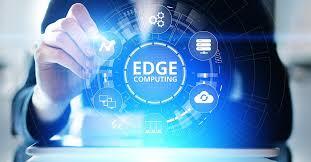In today’s interconnected world, where data generation is skyrocketing due to the proliferation of Internet of Things (IoT) devices and real-time applications, edge computing has emerged as a transformative technology. This article explores the fundamentals, benefits, challenges, applications, and future trends of edge computing, showcasing its pivotal role in enhancing efficiency and responsiveness in data-driven environments.
Fundamentals of Edge Computing
Edge computing decentralizes computation and data storage by placing resources closer to where data is generated, processed, and consumed. Key aspects include:
- Proximity: Moving computation nearer to the data source or “edge” of the network, reducing latency and enhancing response times.
- Distributed Architecture: Utilizing edge devices such as routers, gateways, and servers to perform data processing tasks locally.
- Real-time Processing: Enabling immediate analysis and action on data without needing to send it to centralized cloud data centers.
Benefits of Edge Computing
- Low Latency: By processing data locally, edge computing minimizes latency, crucial for applications requiring real-time responses like autonomous vehicles and industrial automation.
- Bandwidth Optimization: Edge computing reduces the volume of data transmitted to centralized servers, optimizing network bandwidth and lowering costs.
- Improved Reliability: Ensuring continuous operation even in the face of intermittent connectivity or network outages, enhancing system reliability.
- Enhanced Security: Local processing allows for data to be filtered, anonymized, or encrypted before transmission, reducing security risks associated with data breaches.
Applications Across Industries
Edge computing is revolutionizing various sectors:
- Manufacturing: Enabling predictive maintenance, real-time quality control, and operational efficiency enhancements in smart factories.
- Healthcare: Facilitating remote patient monitoring, real-time diagnostics, and personalized medicine applications.
- Smart Cities: Supporting traffic management, public safety systems, and environmental monitoring through IoT sensors and edge analytics.
- Retail: Powering personalized customer experiences, inventory management, and real-time analytics for optimized store operations.
Challenges in Edge Computing
- Resource Constraints: Edge devices typically have limited processing power, memory, and storage, necessitating efficient resource management strategies.
- Data Management: Ensuring data consistency, integrity, and synchronization across distributed edge nodes can be challenging.
- Security and Privacy: Safeguarding edge devices against cyber threats and ensuring data privacy remain critical concerns.
- Interoperability: Integrating diverse edge devices and platforms into cohesive systems that can communicate effectively.
Future Trends and Innovations
- AI and Machine Learning at the Edge: Deploying advanced analytics and machine learning models directly on edge devices for real-time decision-making.
- 5G Integration: Leveraging high-speed, low-latency 5G networks to enhance edge computing capabilities and support bandwidth-intensive applications.
- Hybrid Edge-Cloud Architectures: Developing hybrid architectures that combine the strengths of edge computing with cloud resources for scalable and flexible deployments.
- Autonomous Edge Devices: Empowering edge devices with autonomous capabilities to optimize resource allocation and workload management based on local conditions.
Conclusion
Edge computing is poised to revolutionize the way data is processed, analyzed, and utilized across industries, offering unprecedented speed, efficiency, and responsiveness. As organizations embrace this technology to harness the full potential of real-time data analytics and improve operational agility, the future of edge computing looks promising. By addressing challenges and leveraging advancements in AI, IoT, and connectivity, edge computing is set to drive innovation and shape the next generation of digital transformation, delivering tangible benefits to businesses and enhancing user experiences in our increasingly connected world.

